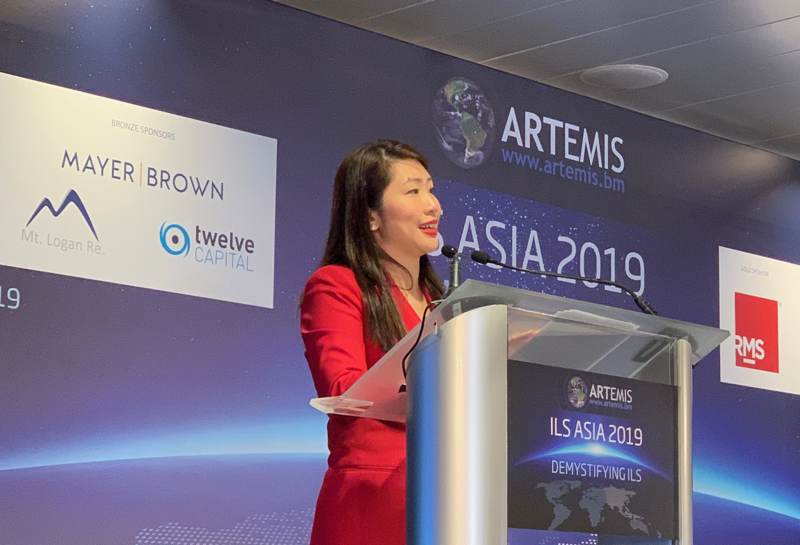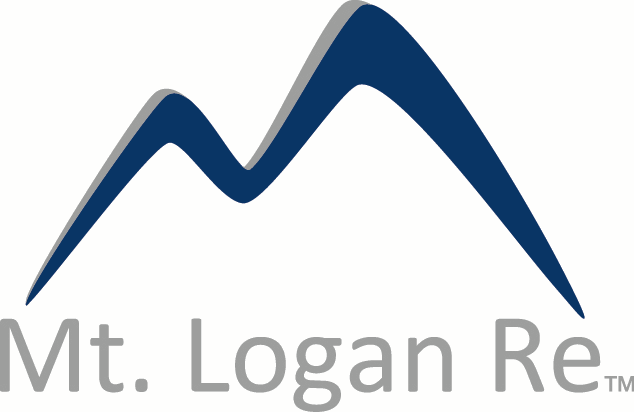Singapore is acutely aware that it needs to continue to innovate if it is to achieve its goal of becoming a key insurance-linked securities (ILS) hub for the Asia region, as well as to support the widest range of ILS transactions possible.
 Speaking at our ILS Asia 2019 conference held in Singapore last week, Gillian Tan, Executive Director, Financial Markets Development Department at Government department the Monetary Authority of Singapore (MAS) told the assembled audience of around 180 that “continuous innovation” is required.
Speaking at our ILS Asia 2019 conference held in Singapore last week, Gillian Tan, Executive Director, Financial Markets Development Department at Government department the Monetary Authority of Singapore (MAS) told the assembled audience of around 180 that “continuous innovation” is required.
Singapore is now home to three catastrophe bonds having finalised its regulations and introduced the grant scheme that supports some of the costs of issuing ILS in 2018.
But Singapore’s ambitions are much broader than just hosting catastrophe bonds that could as easily be issued elsewhere, the country wants to become the ILS domicile of choice for Asia and to assist in pushing the boundaries of global ILS as well.
Tan started by saying that Singapore is making good progress on establishing itself as an ILS domicile, with ILS becoming “increasingly accepted as a risk financing mechanism and a mainstream asset class in Asia.”
She noted that the ILS market is not one for standing still, as even after two challenging years of losses and the ongoing issues related to loss creep and trapped collateral, ILS market expansion continues.
“This dynamic market continues to push the envelope in terms of new risks, new sponsors, and new geographic territories,” Tan said. “Even within the natural perils space, there has been an expansion in scope in the risks covered.”
“Beyond natural perils, the industry is beginning to see ILS issuances covering newer risk types such as operational, pandemic and terrorism risks. ILS capital is best deployed where there is a market gap and the industry is unable to meet the capacity needs,” Tan continued.
This is one area Singapore aims to put its innovation to good use, in assisting the ILS market’s coverage to become even more useful and relevant to sponsors, from government’s, to insurance and reinsurance firms, to corporates.
Cyber is one area where Singapore has already set out is stall as a target for ILS market expansion.
In late 2018, the Finance Minister of Singapore revealed the world’s first commercial cyber risk pool, which is slated to be a facility offering cyber insurance coverage to corporate buyers in the Asia region and that is expected to be backed by both insurance-linked securities (ILS) and traditional reinsurance in the future.
“As new and emerging risks such as cyber continue to remain challenging for the insurance market to address, the ILS market may be a critical enabler to solve these large protection gaps,” Tan said.
While coverage and risks issued in ILS and catastrophe bond transactions are expanding, it’s important that new sponsors are also seen, another area Singapore feels its offering can assist, especially in the Asia region.
“The market is not just seeing first time sponsors but also a broader spectrum of ILS users, with ILS growing from an instrument used only by the insurers to manage their own books, to providing capacity for corporates and sovereigns,” Tan explained.
Adding, “ILS is becoming mainstream as a risk transfer solution, as alternative capital proves itself to be permanent capital despite the challenging market. This is a positive development.”
But the market needs to keep pushing forwards in order to continue to attract new sponsors, Tan said.
“To keep driving interest from the corporate and public sector segment, there will need to be continuous innovation to adapt to the requirements of these new sponsors, many of whom would welcome the diversification opportunity that ILS products would provide,” she said.
Tan highlighted the ASEAN region, explaining that with natural catastrophe and weather exposures high for much of its population there is a need for an innovative approach to tackling the problem of the insurance and reinsurance protection gap.
“The widening protection gap will have to be addressed with a combination of traditional and innovative risk
transfer solutions. ILS can complement traditional solutions to provide coverage for peak exposures for governments, corporates and insurers in the region,” commented Tan.
Moving on to discuss ILS market development in the Asia region and how important this is, Tan explained that is required to keep innovation driving greater penetration of ILS among users and investors in Asia.
She said, “Asia is now well-poised to develop its ILS market by harnessing Asian risks and Asian ILS capital to provide diversification to the developed ILS markets. To catalyse the Asian markets, data, education and a lively marketplace are key.”
Data is vital for further developing Asia’s catastrophe bond and ILS market, with better data and services like Singapore’s in development NatCatDAX set to “support the understanding of Asian risks and the valuation needs of investors.”
“Singapore works closely with international organisations like the World Bank and the Asia Development Bank to explore ways to support sovereign issuers that have begun to show strong interest to build ILS into their disaster risk and financing strategy. Apart from sovereign issuers, there is also a strong pipeline of interest by insurers and reinsurers in the region that are new to the market. We are hopeful to see a breakthrough in new countries and sponsors in Asia tapping on the ILS market to protect their risks,” Tan explained.
Alongside this, Asia’s investor community is also a target, as, “From the capital supply perspective, Asia provides less than 9% of ILS capital, with only specialty ILS fund managers, and a small number of larger pension funds and institutional investors taking on these risks. Raising the awareness of ILS as an alternative asset class would be a crucial next step to drive interest in ILS products.”
Asia needs its own local market for ILS, Tan said, with expertise and the local benefit of same time zone support.
Tan described the benefits of, “Having a marketplace within Asia, including an efficient domicile and access to ILS service providers in the same time zone, would be beneficial to the ILS market in Asia. The ecosystem here has to complement the global service providers who have been the leading forces for the market, while also adapting to the unique risks and culture in Asia, to better respond to Asia’s ILS needs.”
Singapore is gaining traction in ILS, with its regulations now put to the test by a number of sponsors and scrutinised by more, leading to a potential pipeline for more transactions over the rest of 2019 and into 2020.
“With these deals under our belt, Singapore is fast maturing as a viable ILS domicile with more established processes and institutional knowledge in place to efficiently facilitate new ILS issuances,” Tan said.
One area where Singapore demonstrates this is in its fast-track approval process of 8 weeks for an application of a standard, classic ILS structure.
“But this is just the beginning of the journey,” Tan said. “To create a sustainable and dynamic ILS hub, Singapore must build an ecosystem and infrastructure that can adapt to the evolving requirements for new structures. The demand for ILS as a reinsurance tool is still developing in most of Asia, and the region will need time to build up data and capacity capabilities to adopt disaster risk financing tools. As the ILS market in Asia continues to build momentum, we must continue to strive to create a forward-looking ILS hub.”
In order to achieve this Singapore is set to now refine its ILS regulatory, tax and corporate infrastructure, Tan explained, “to enable the structuring of a wide range of ILS, and support innovation in the market.”
In addition, Singapore will encourage the development of local expertise, aiming to offer, “a vibrant ecosystem of ILS service providers in the Asian time-zone to service Asian risks and clients.”
At the same time the Monetary Authority of Singapore (MAS) will continue to promote ILS to Asian investors, a key role that helps ILS to grow globally as well.
Singapore aims to develop its regulations for a protected cell structure that can support multi-use collateralised reinsurance vehicles as well, a key step for a localised Asian ILS market, as this would also help to promote the benefits of fully collateralised protection as well.
The proof will be in the implementation and the transacting of unique ILS deals, focused on the Asian market. While that will still take time, Singapore is making all the right noises about creating a serious marketplace for Asian ILS sponsors and investors.
Tickets are now on sale for our next New York conference, ILS NYC 2020.
For all enquiries about sponsoring Artemis conferences please contact [email protected].
Our Sponsors for ILS Asia 2019 were:
 View all of our Artemis Live video interviews and subscribe to our podcast.
View all of our Artemis Live video interviews and subscribe to our podcast.
All of our Artemis Live insurance-linked securities (ILS), catastrophe bonds and reinsurance video content and video interviews can be accessed online.
Our Artemis Live podcast can be subscribed to using the typical podcast services providers, including Apple, Google, Spotify and more.
 |
|
 |
 |
 |
|































